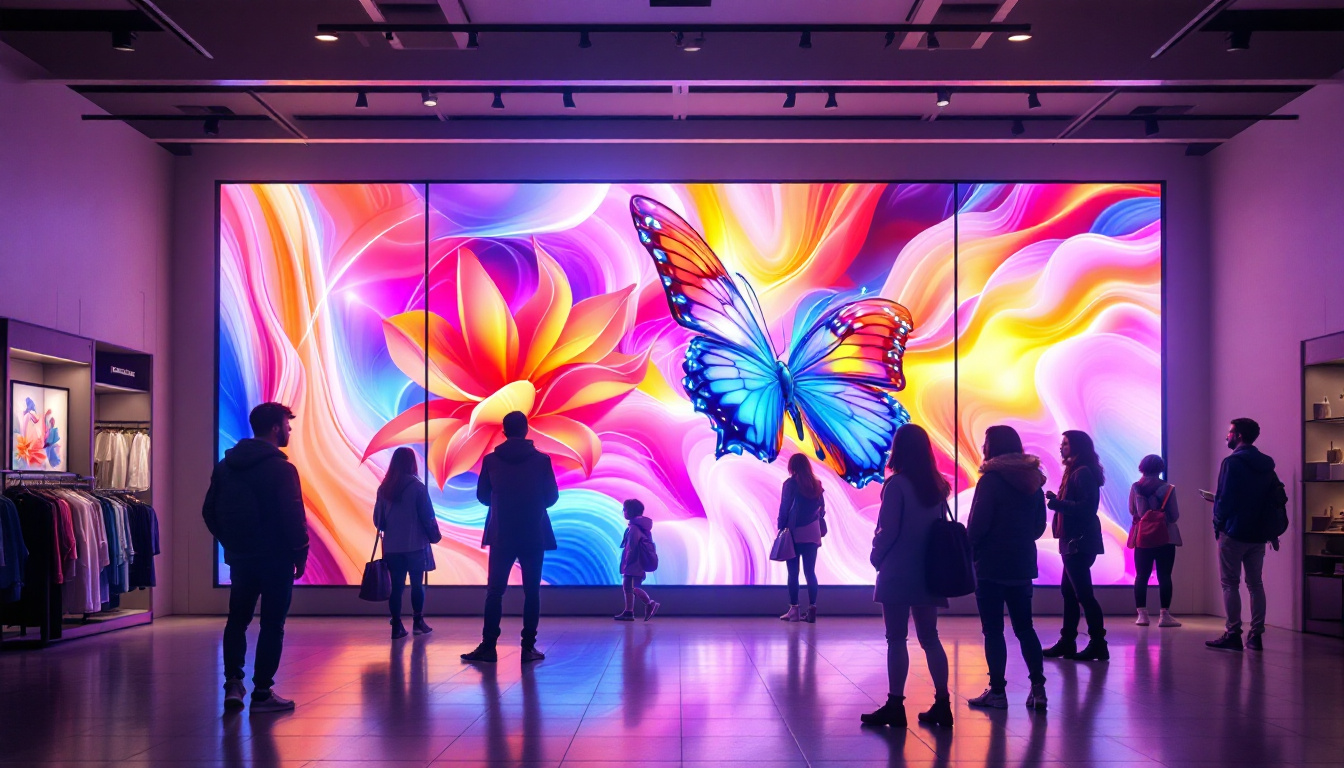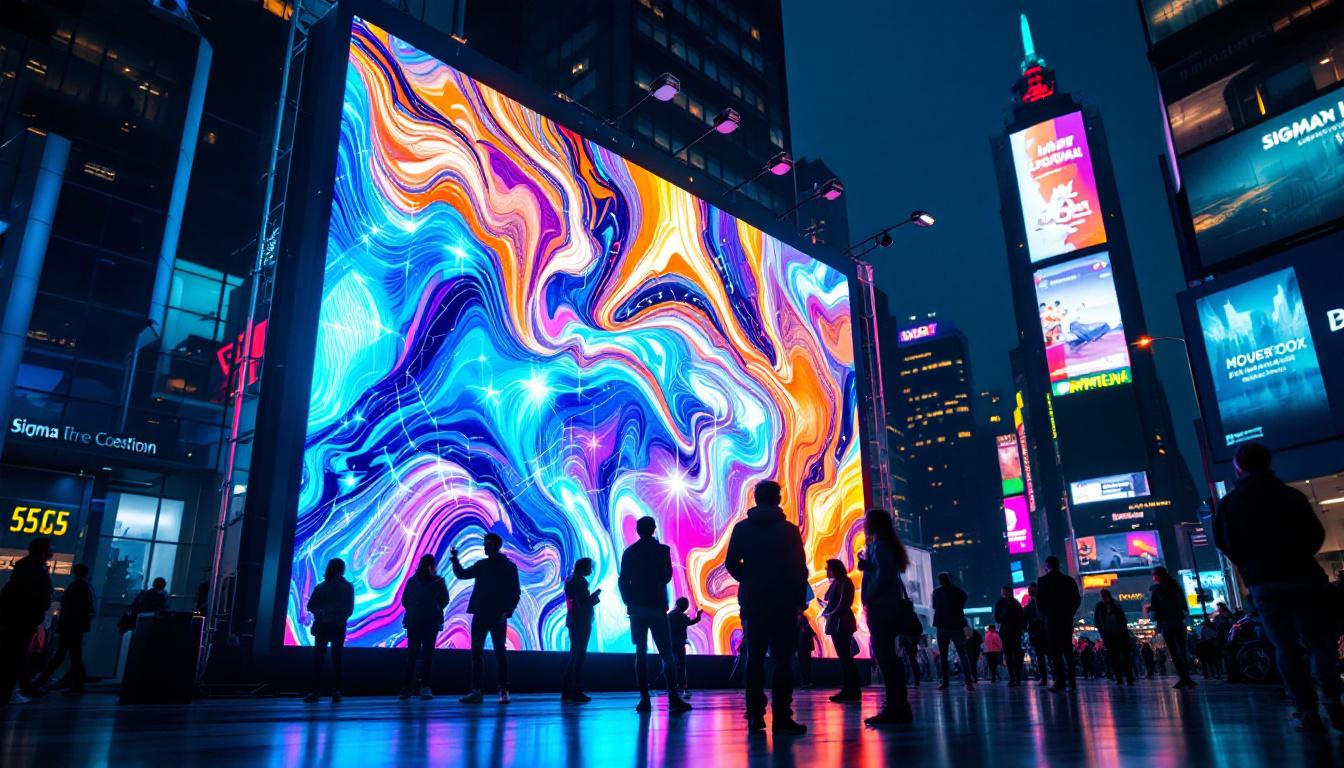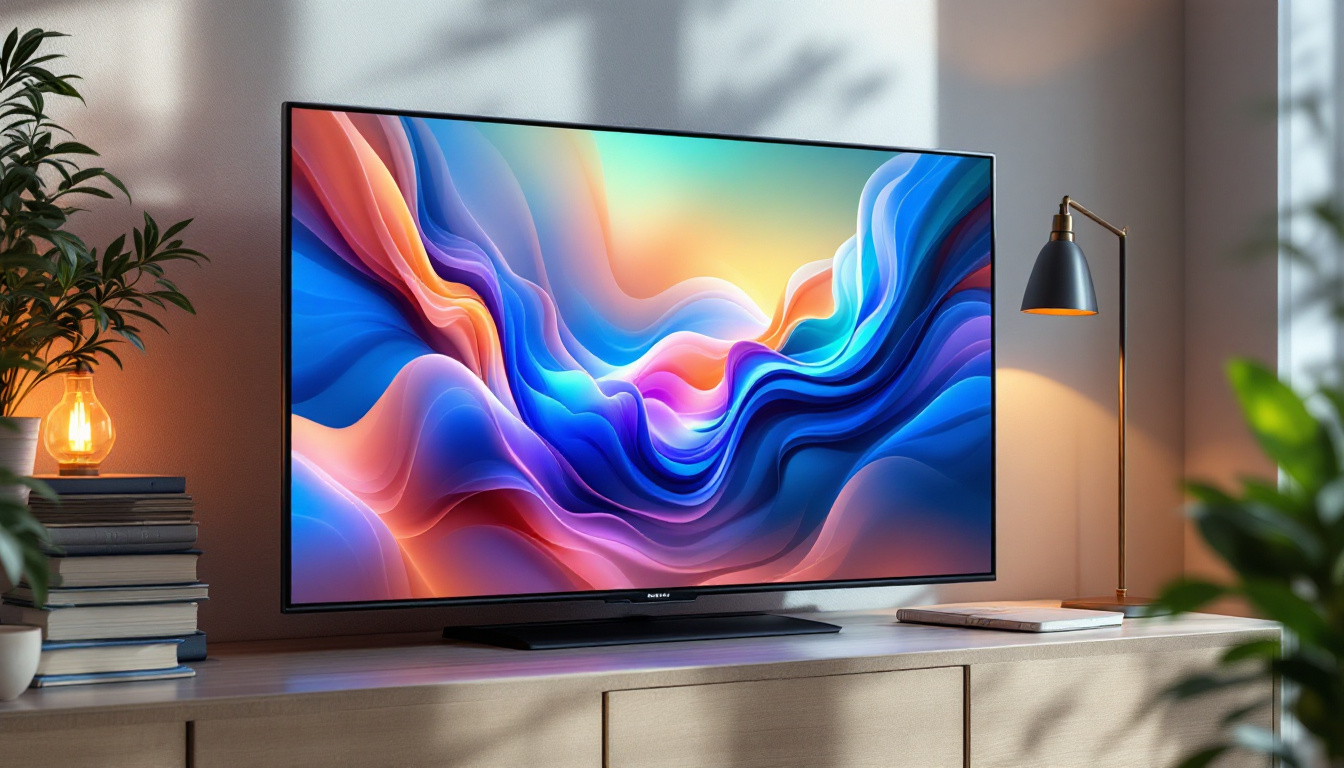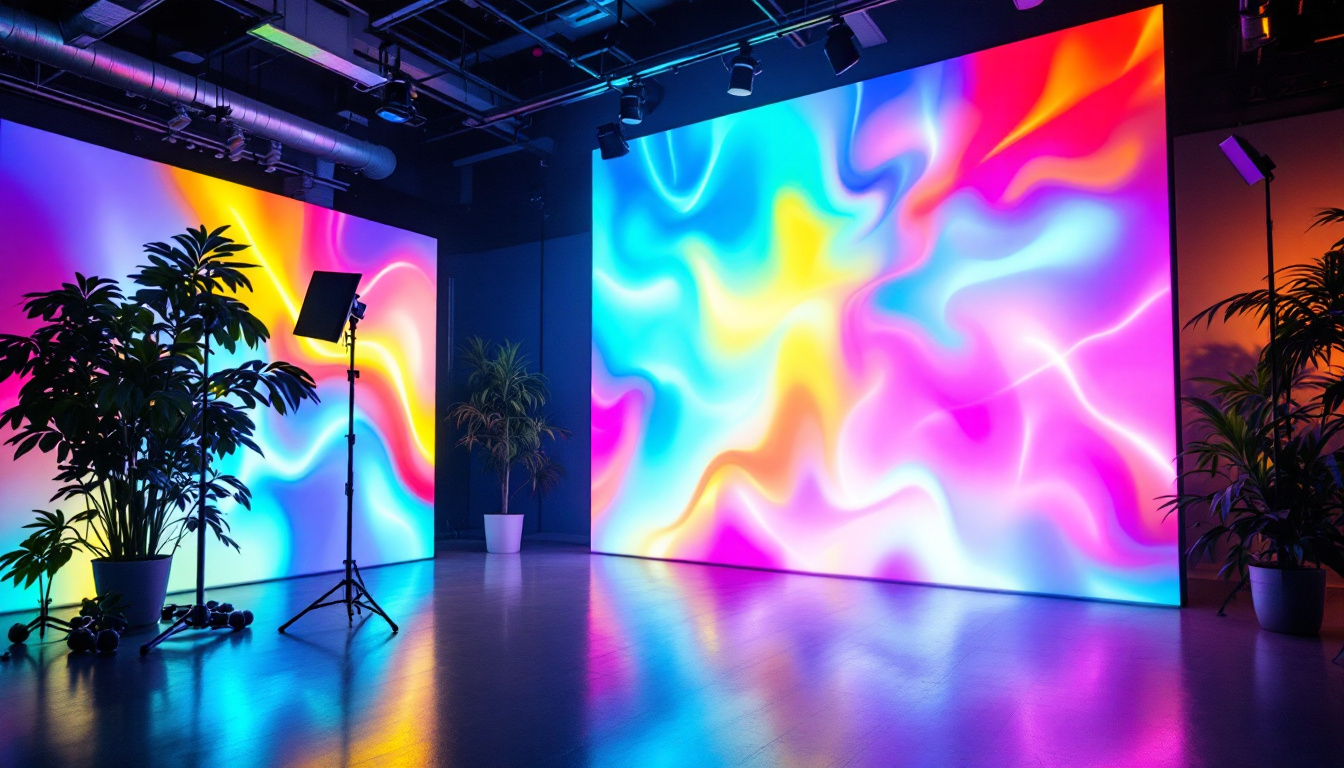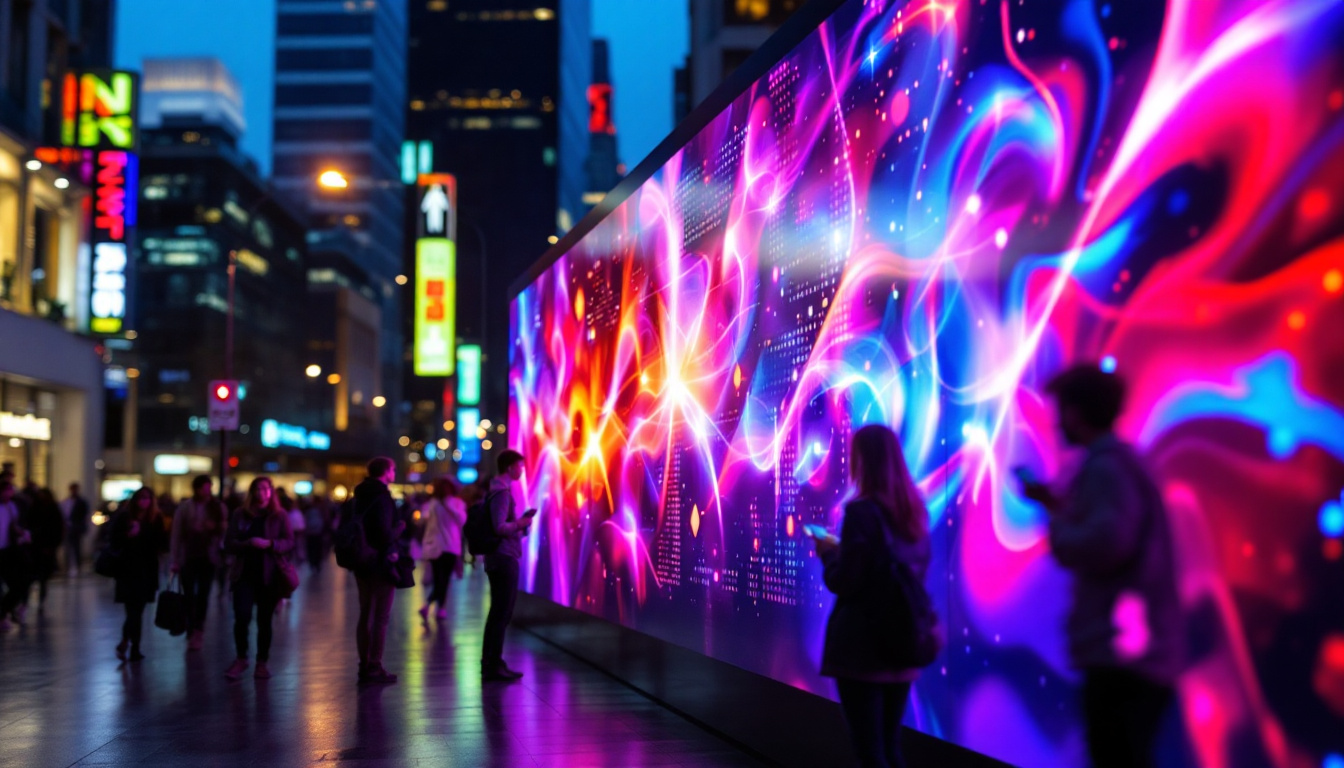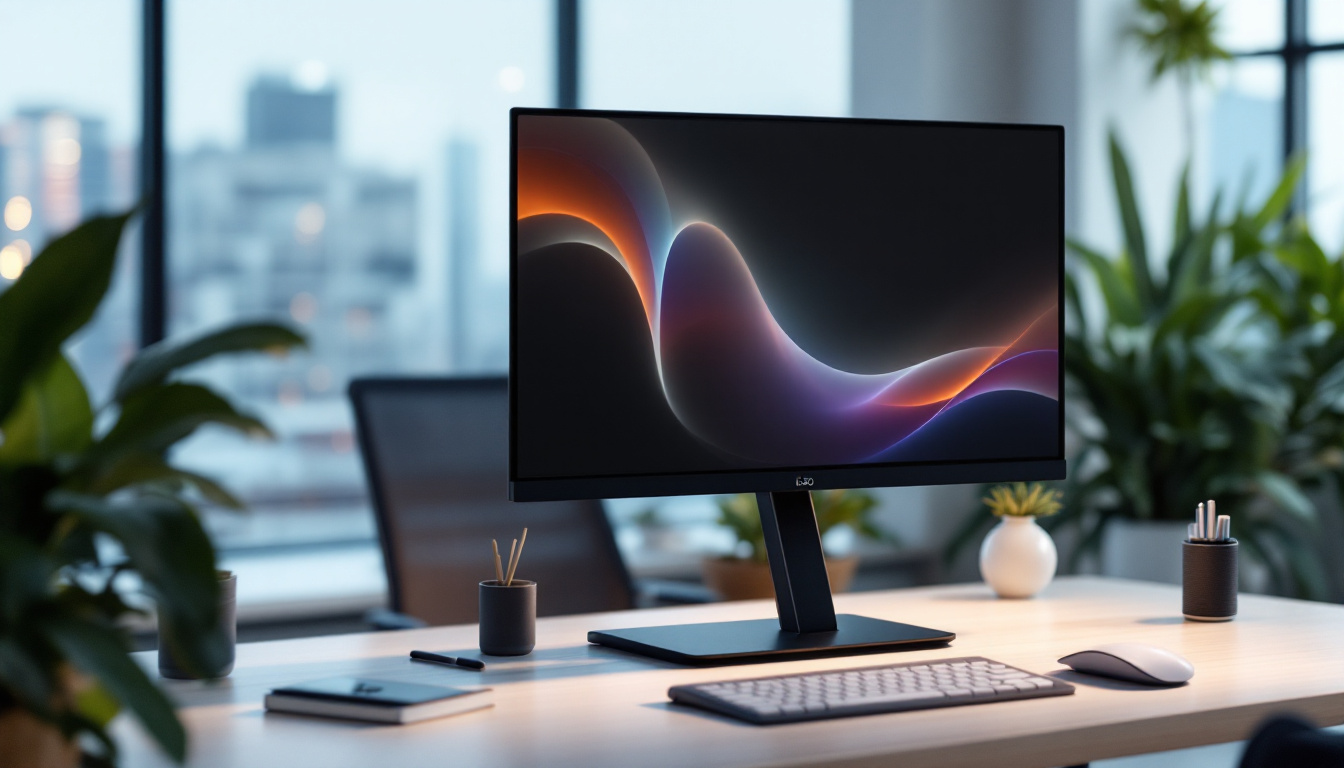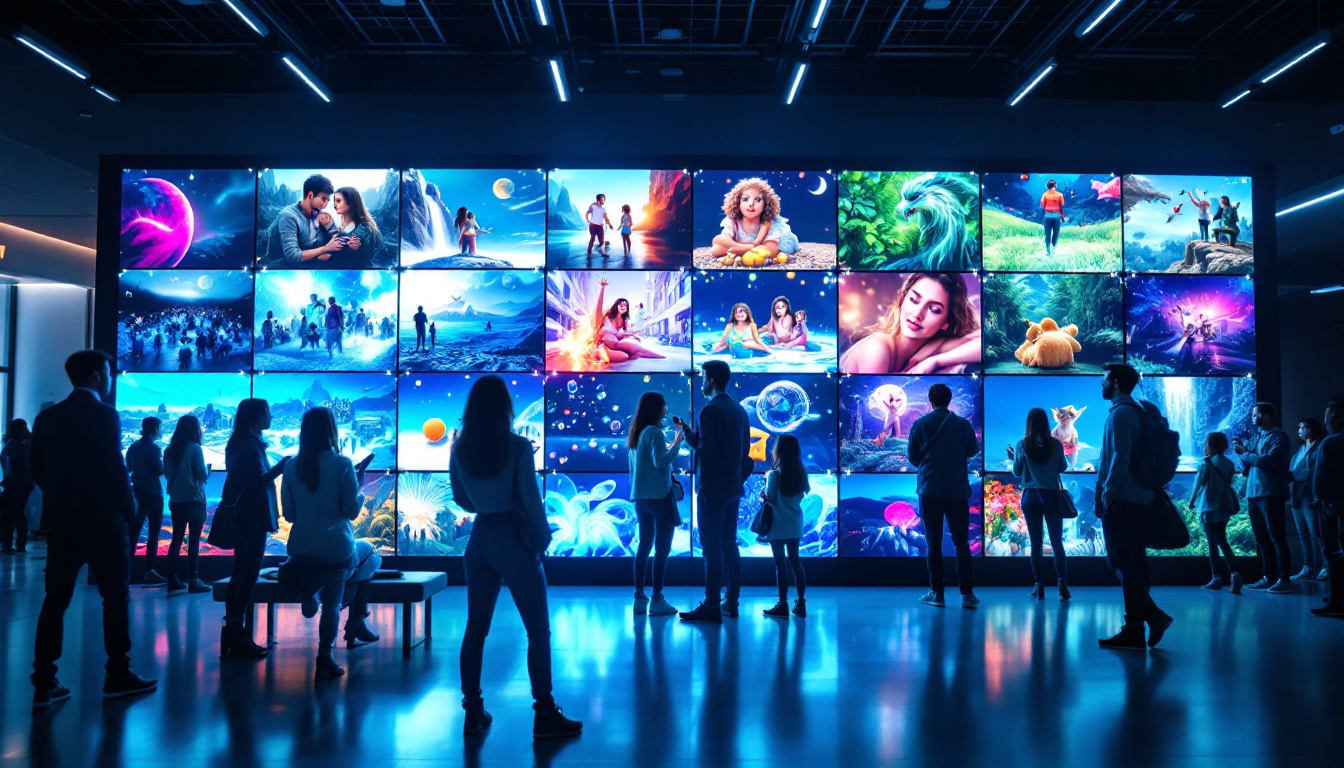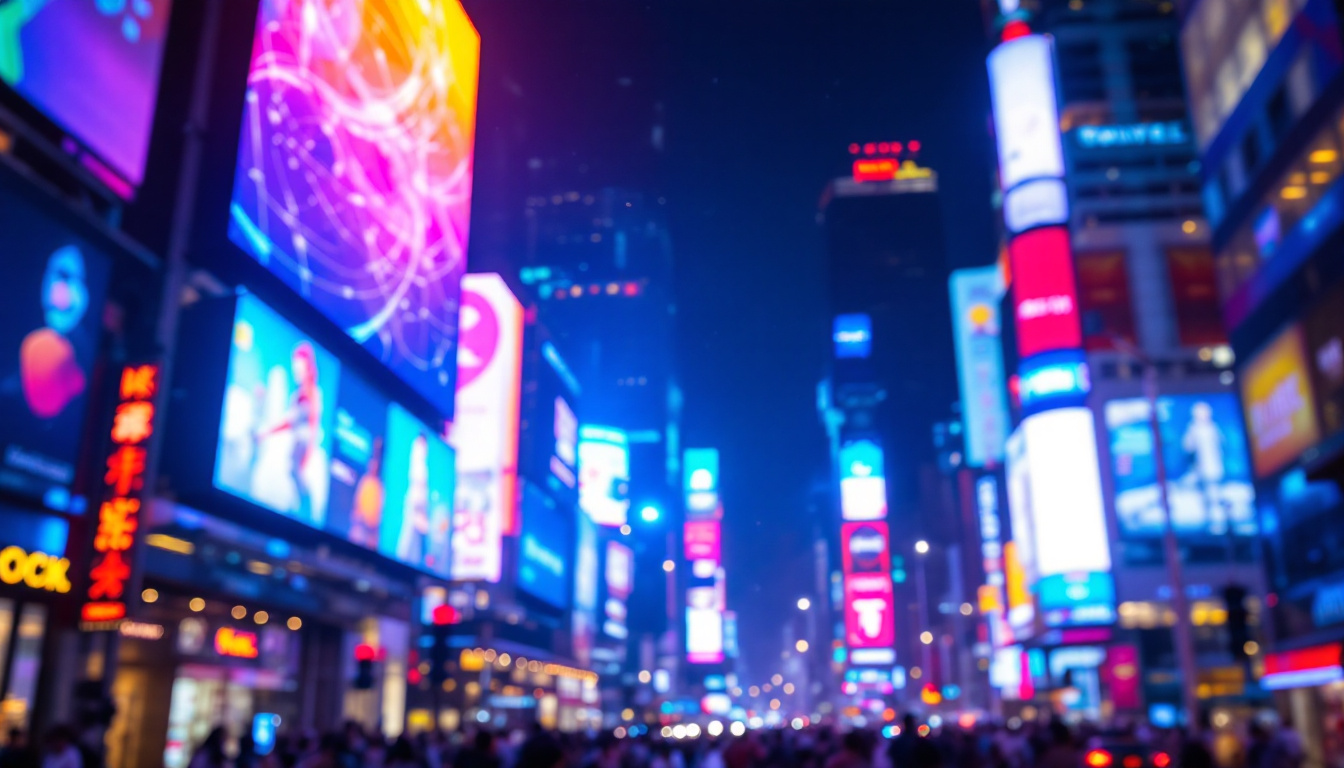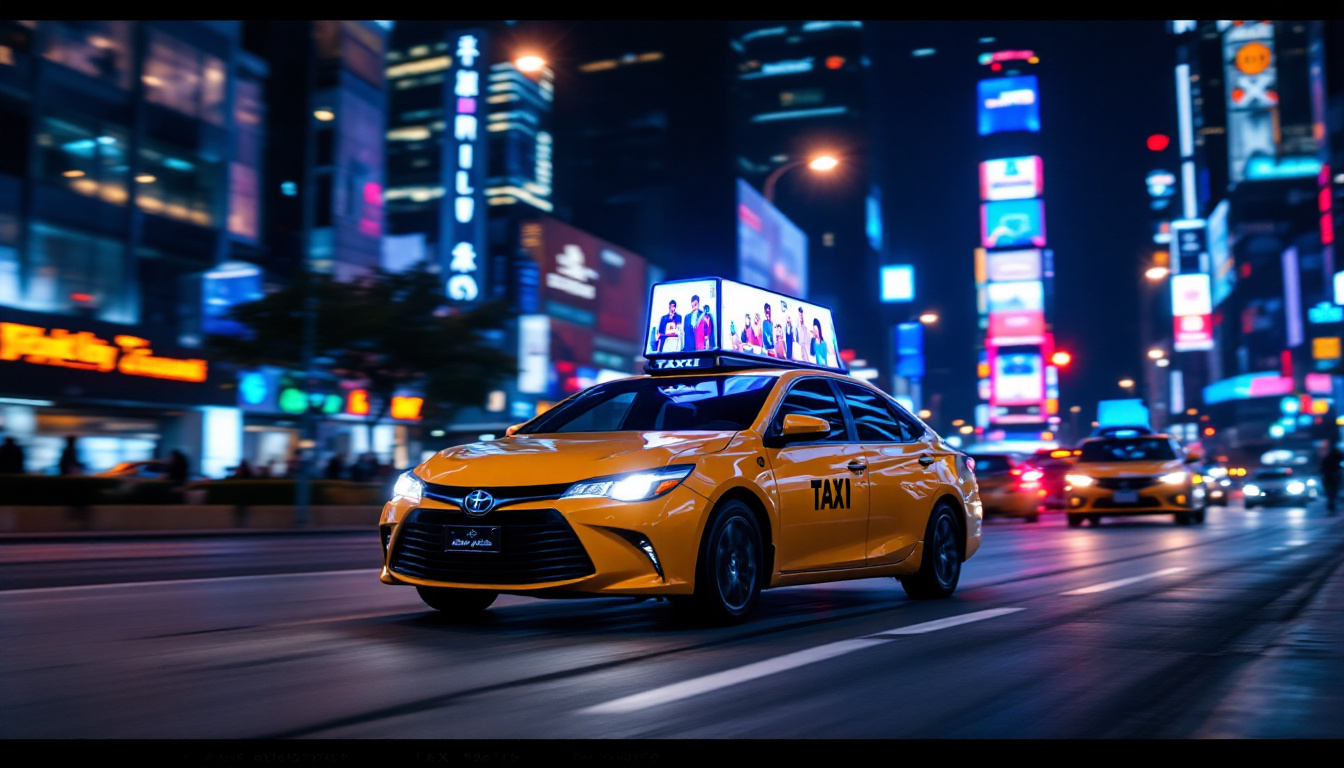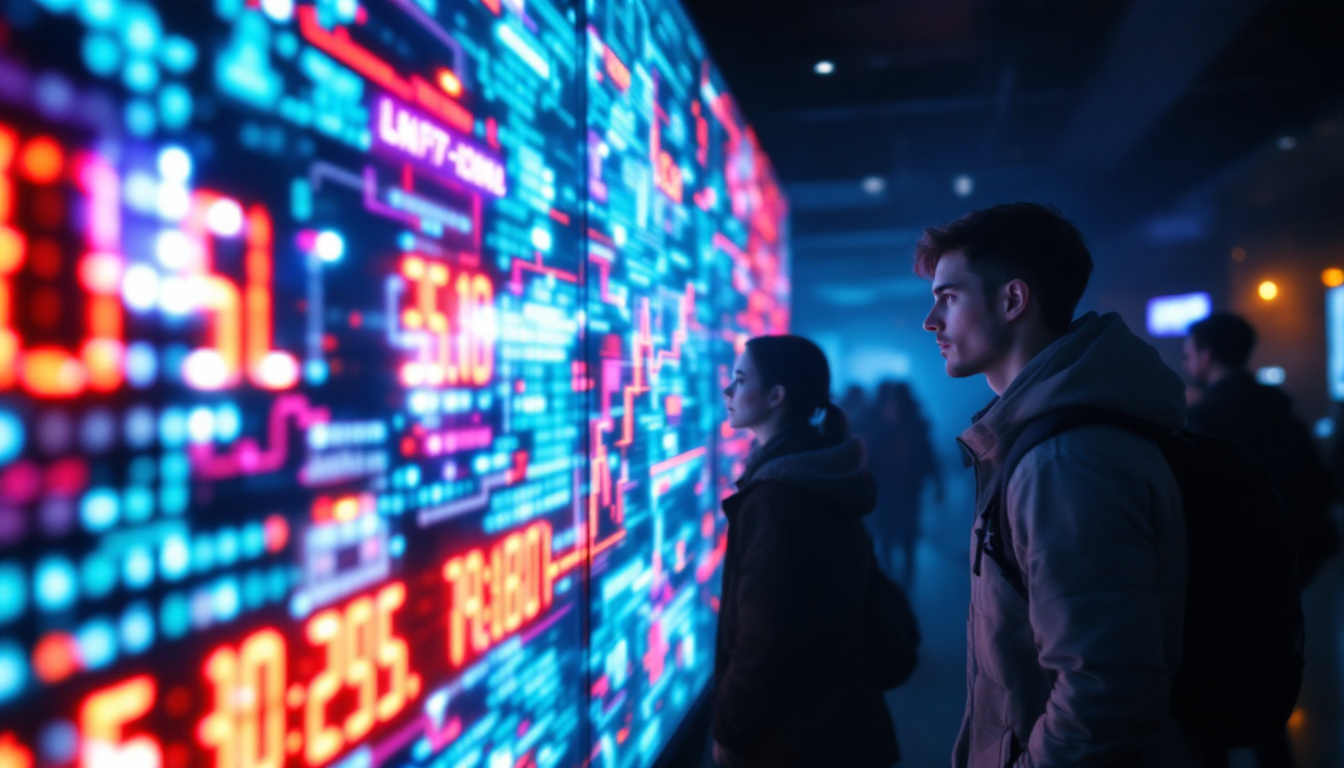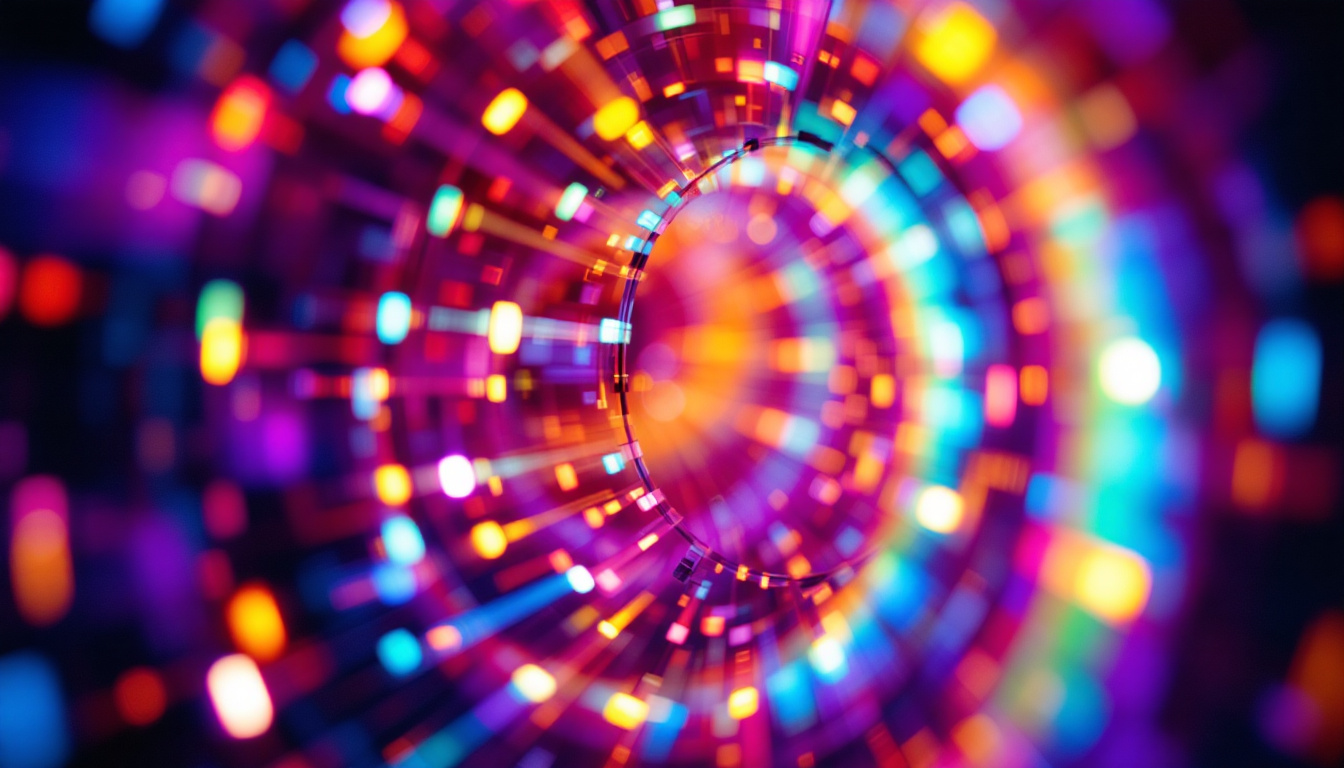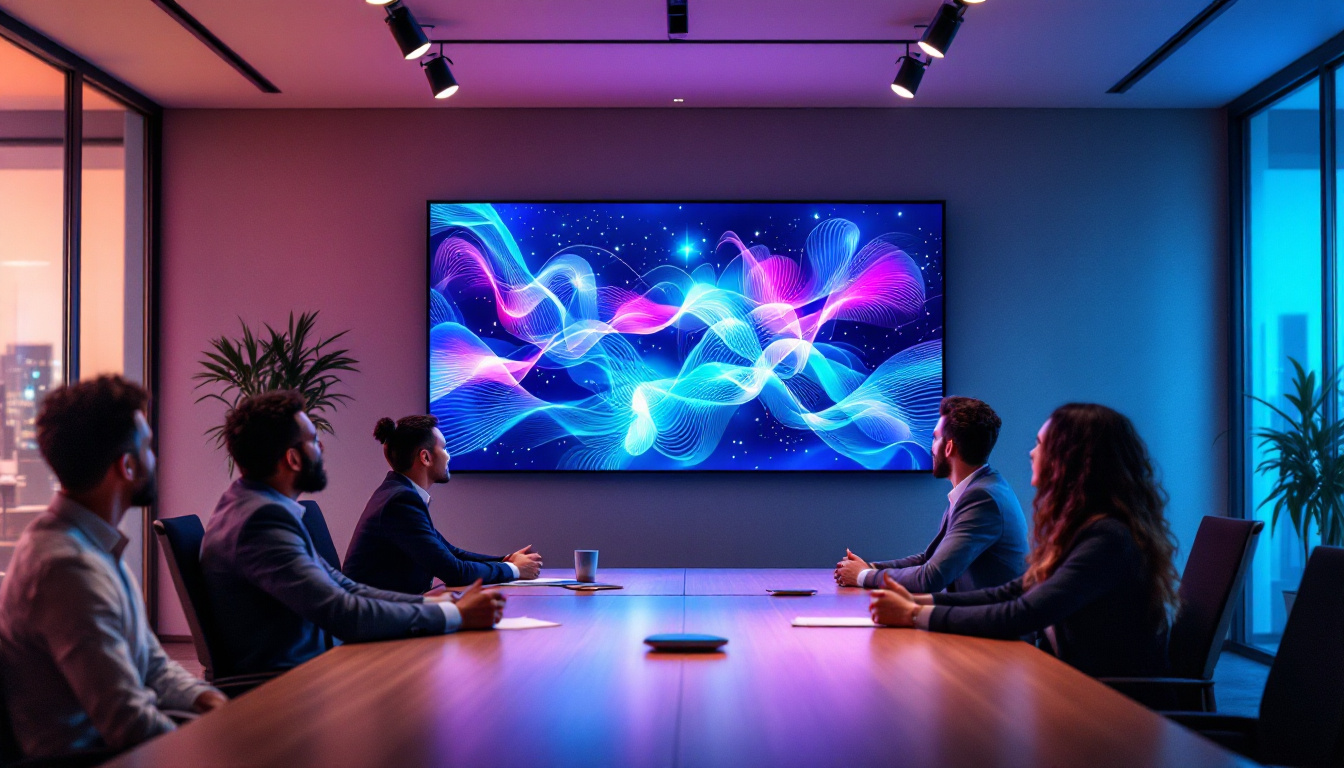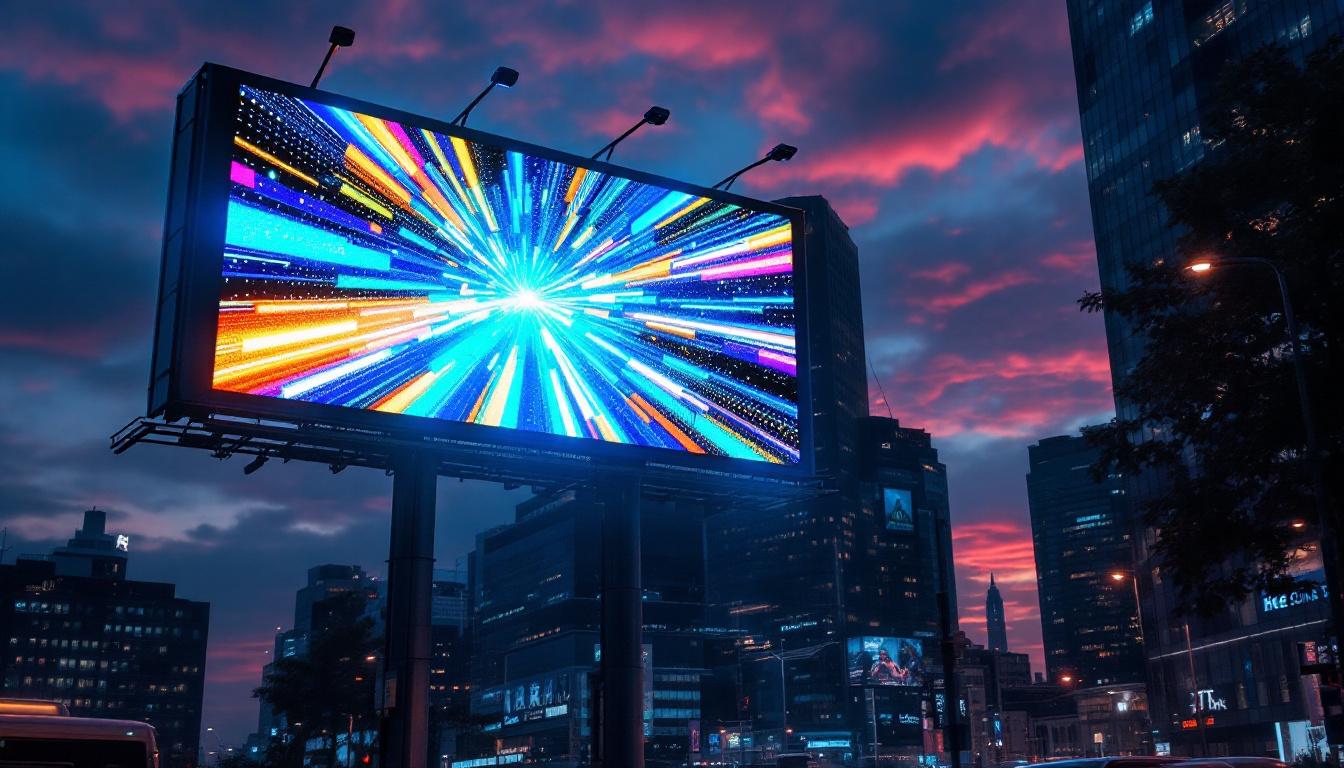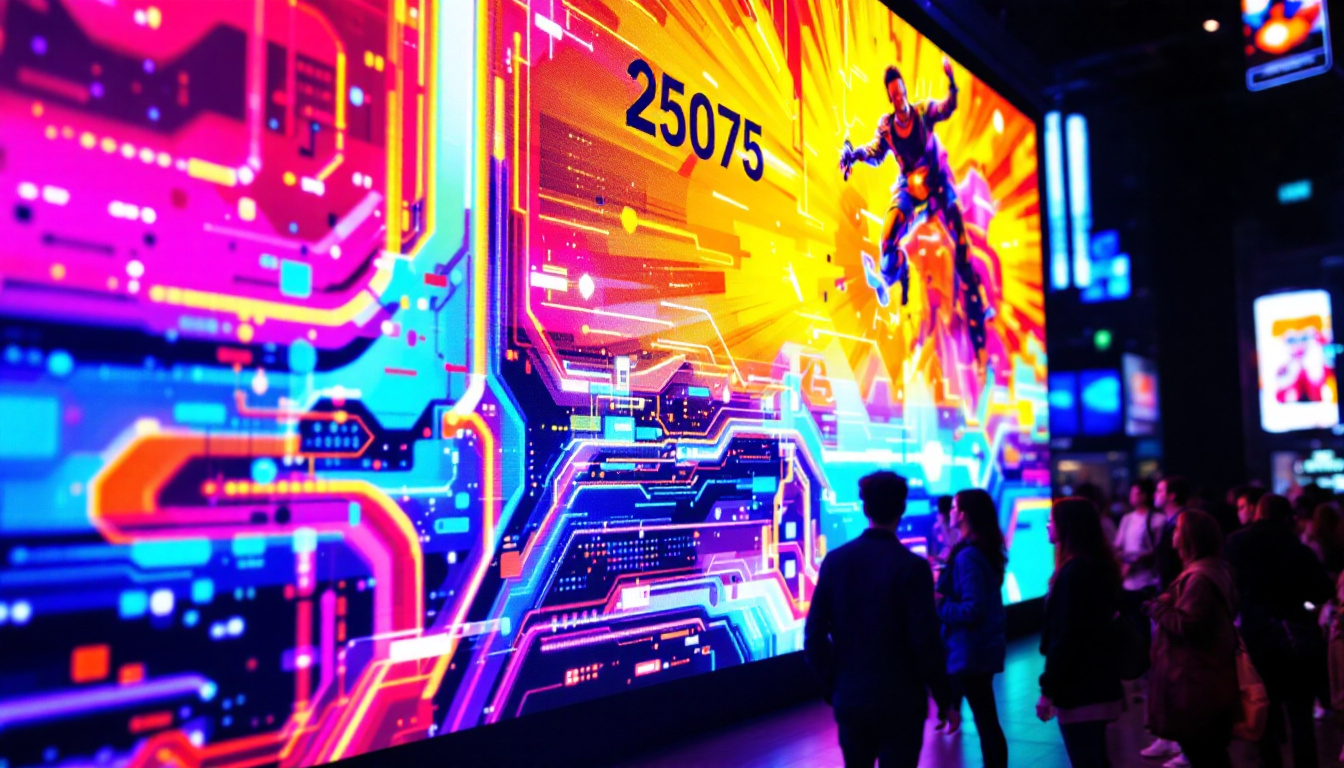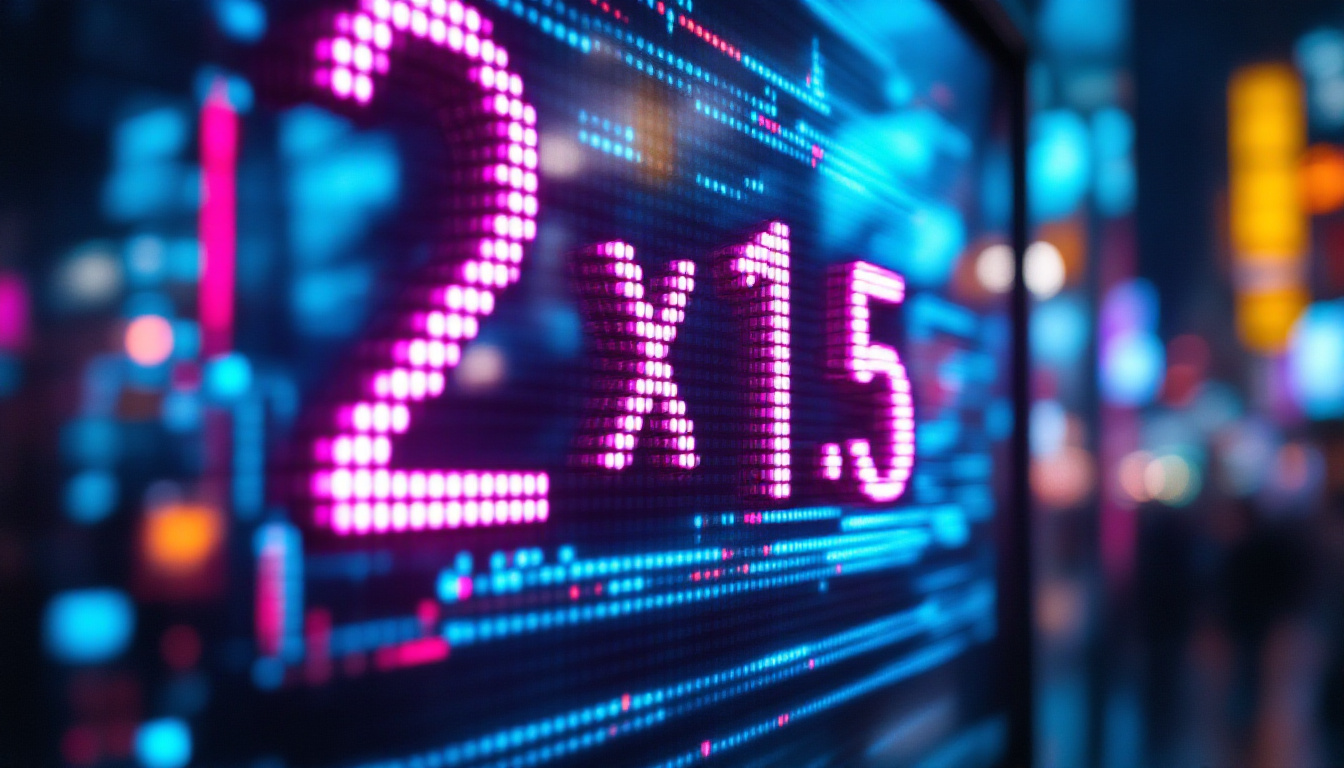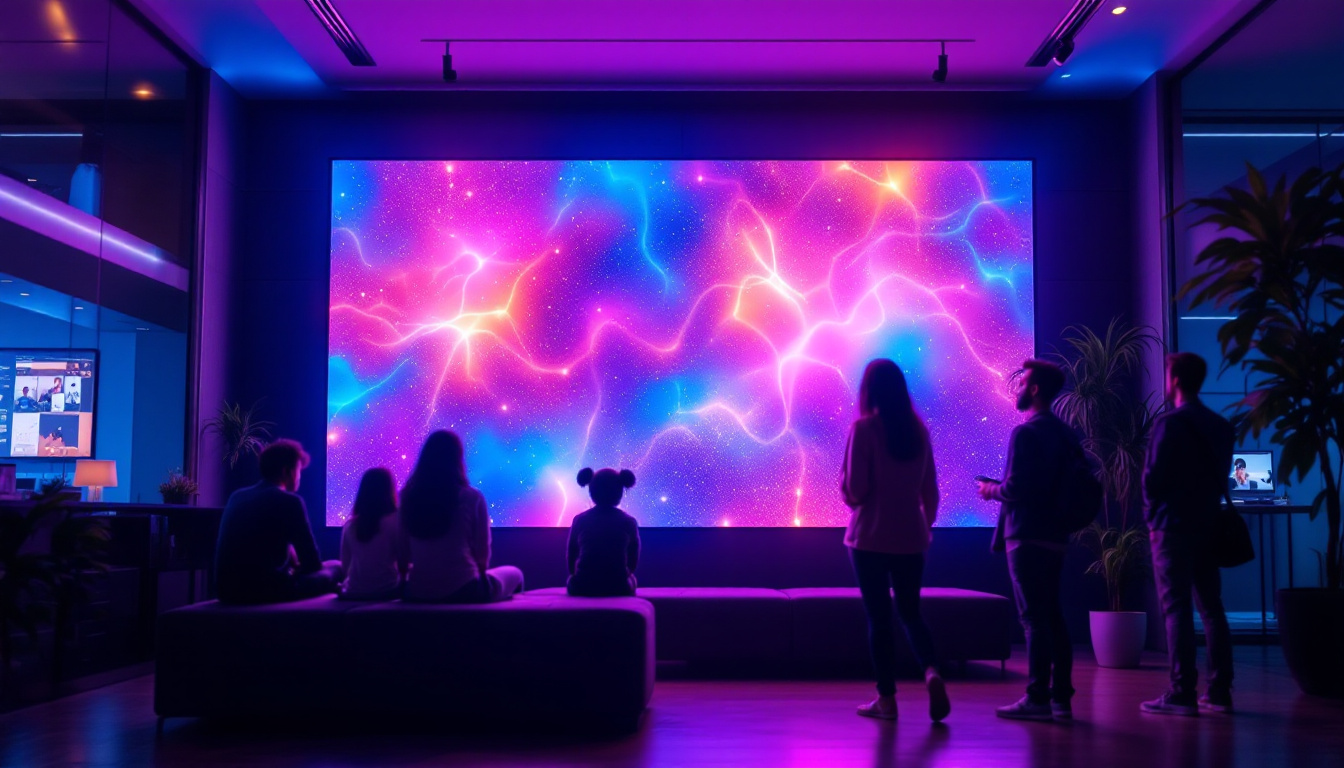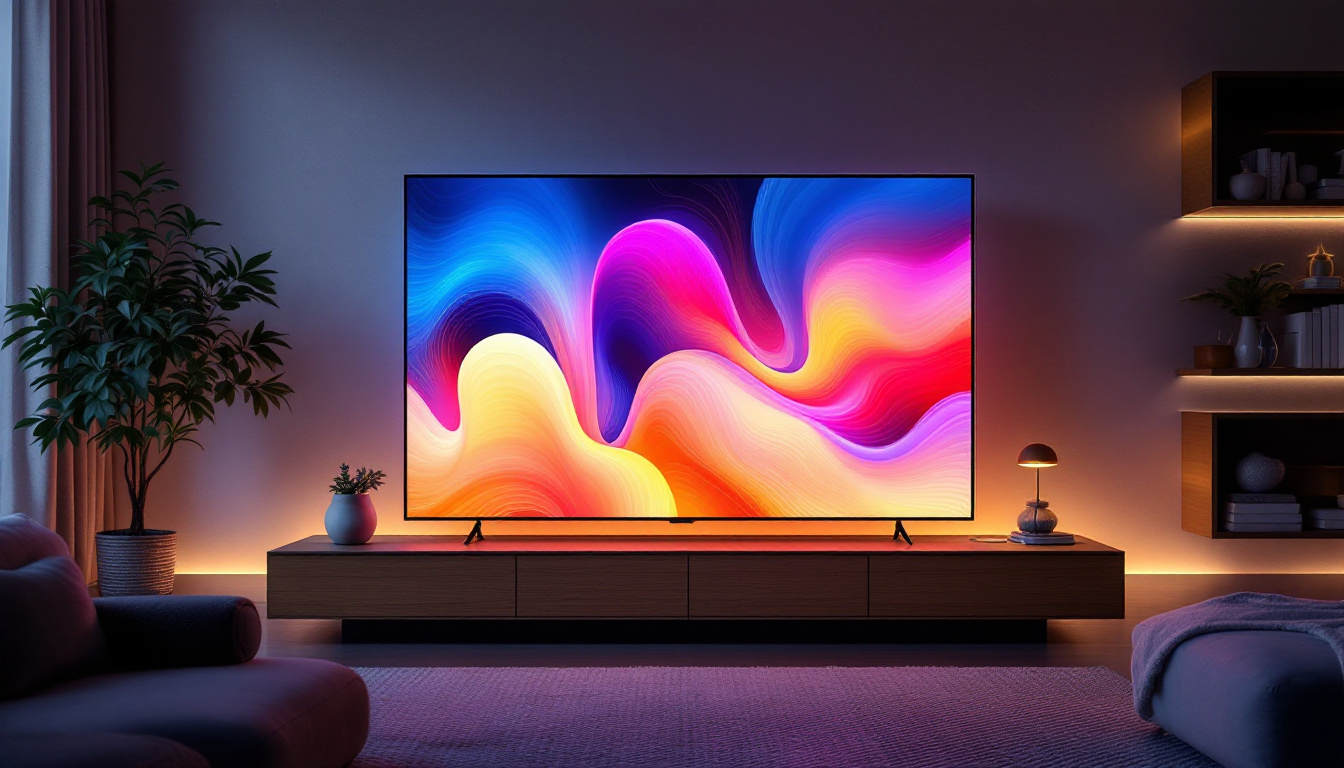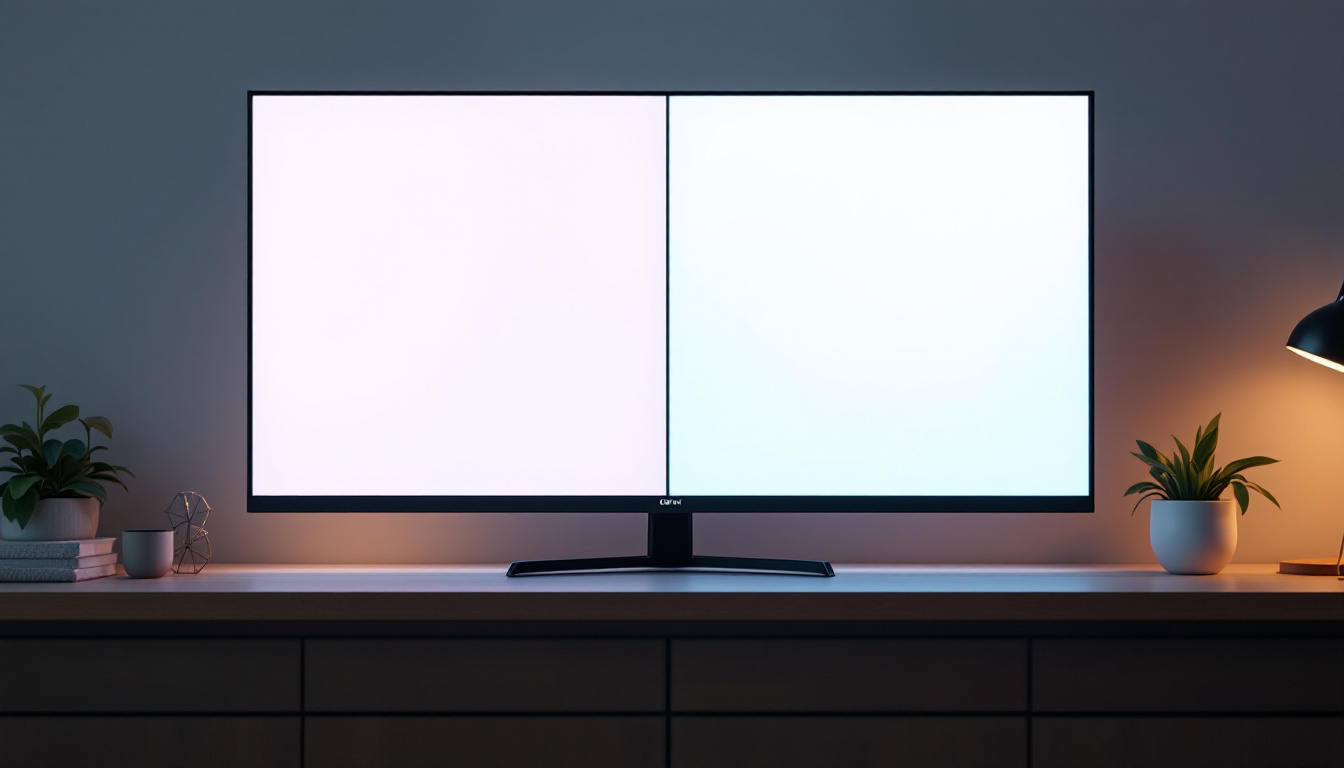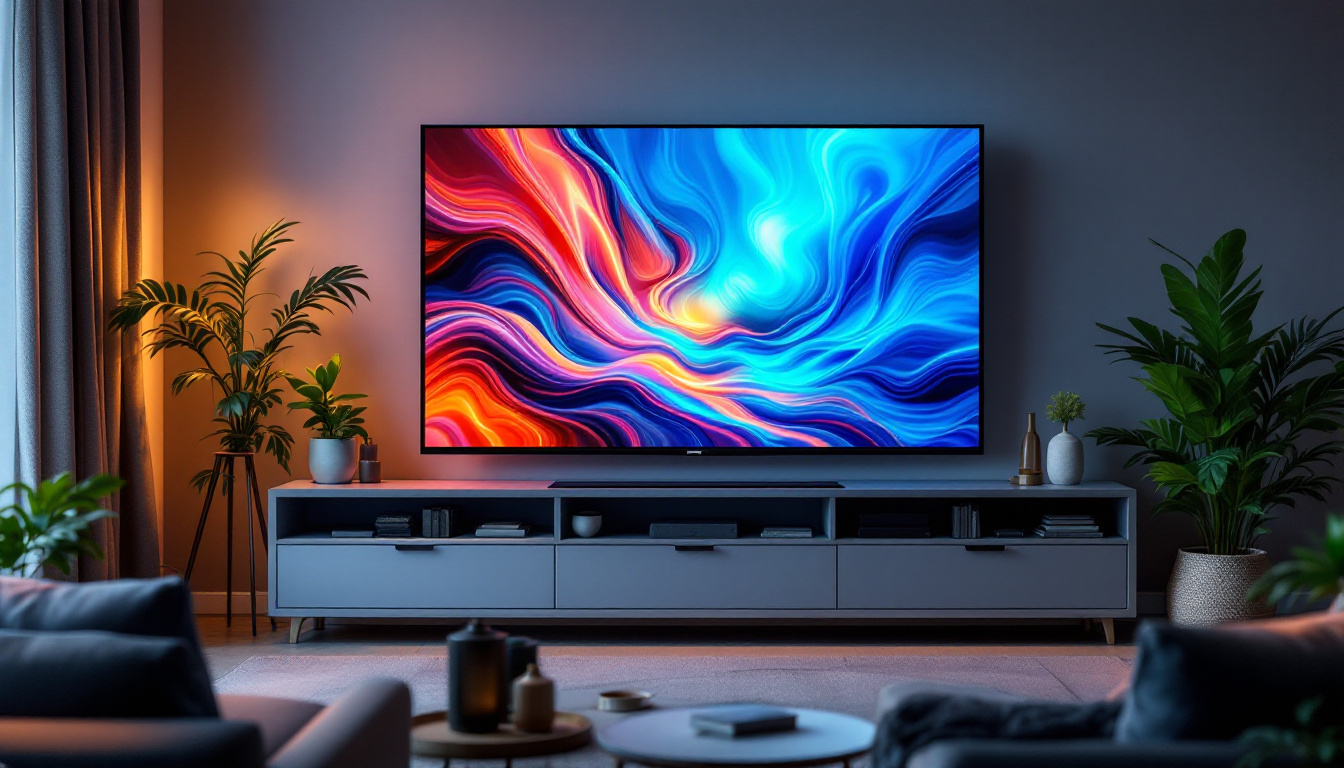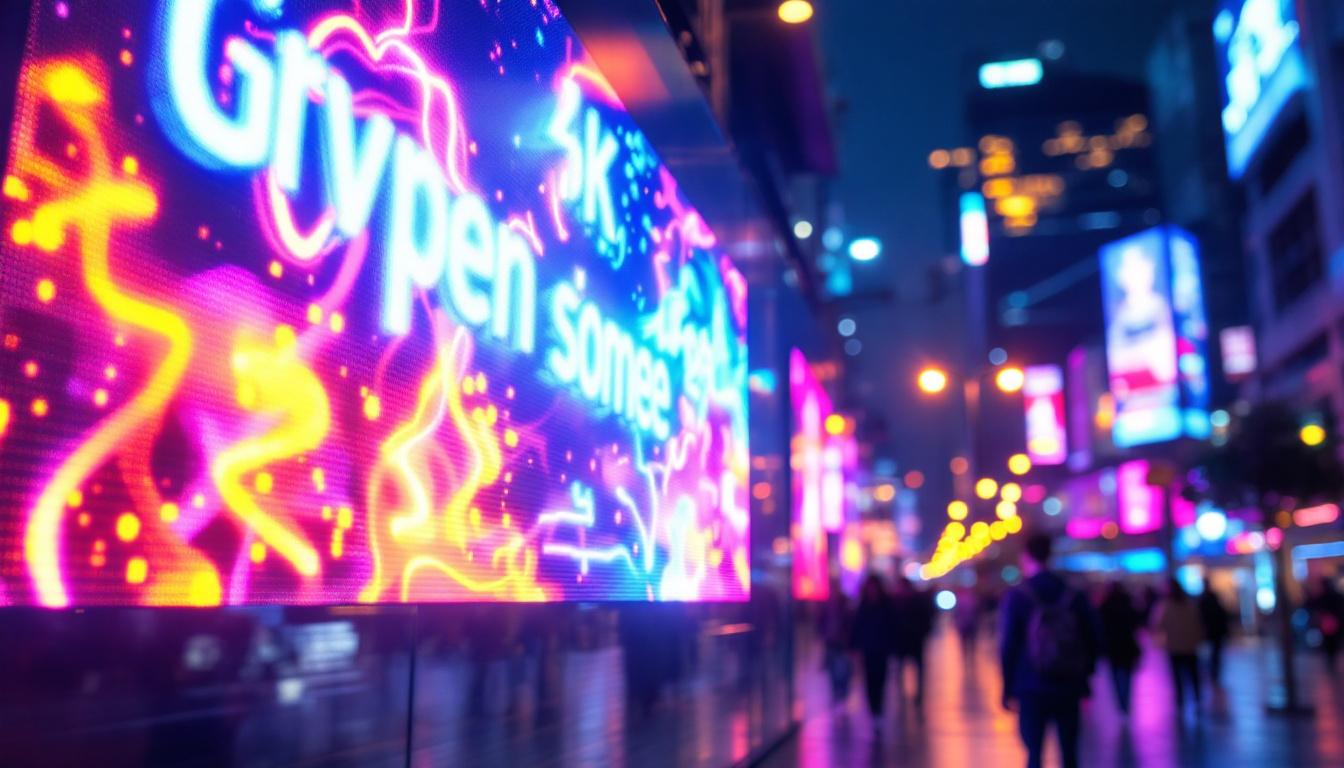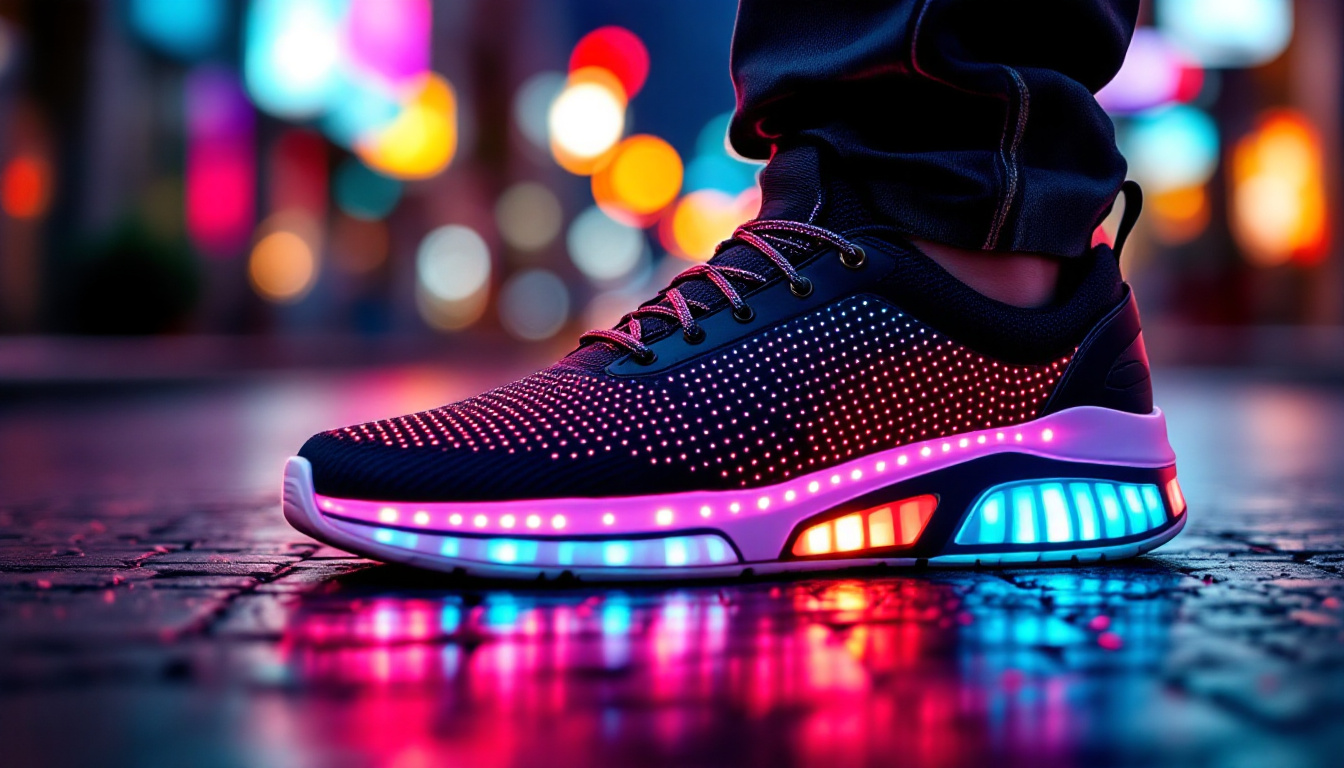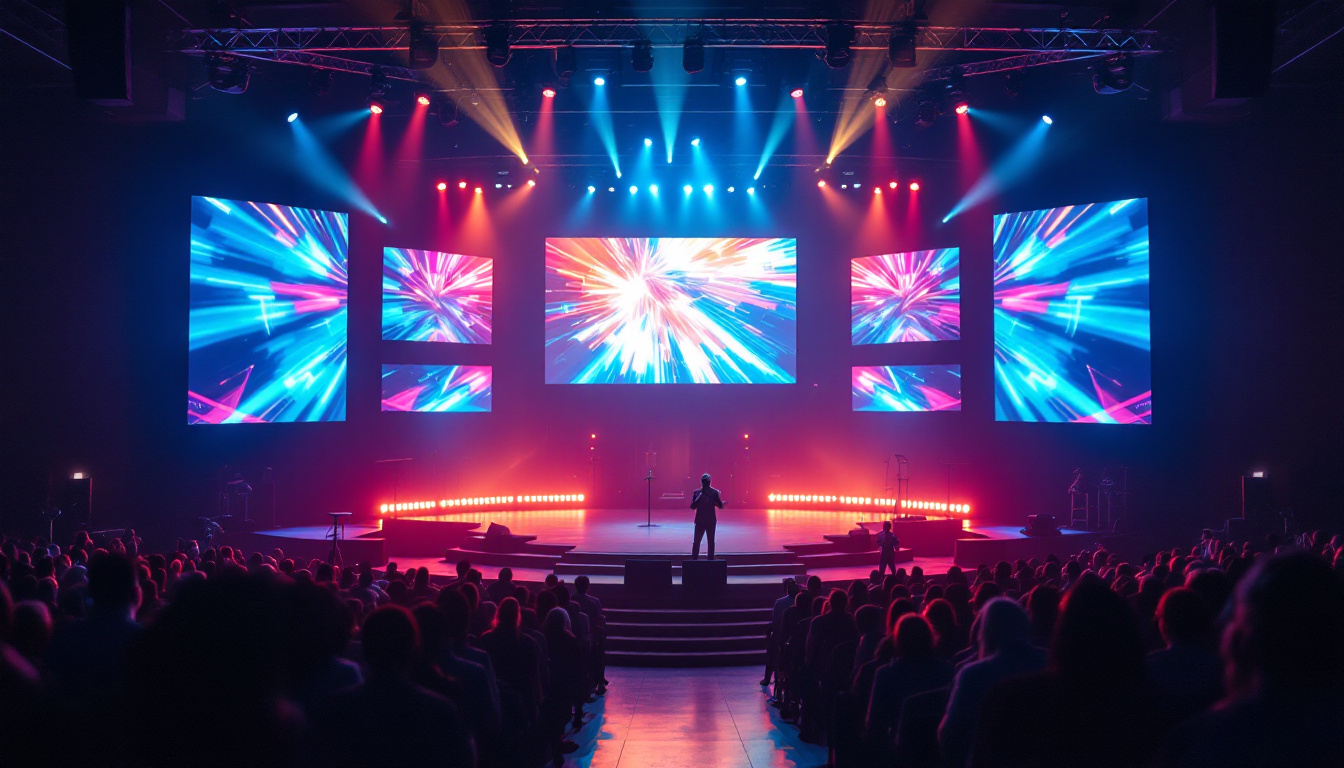In today’s fast-paced retail environment, the importance of visual communication cannot be overstated. Digital screens, particularly LED displays, have emerged as a pivotal tool for retailers aiming to capture customer attention and enhance the shopping experience. This article explores the various aspects of LED displays in retail settings, from their technology and benefits to best practices for implementation.
Understanding LED Technology
Light Emitting Diodes (LEDs) are semiconductor devices that emit light when an electric current passes through them. This technology has evolved significantly over the years, making LED displays a popular choice for retail environments. Unlike traditional display technologies, LED screens offer vibrant colors, high brightness, and energy efficiency, making them ideal for capturing the attention of potential customers. The longevity of LED lights is another significant advantage, as they can last up to 50,000 hours or more, greatly reducing the need for frequent replacements and maintenance. This durability not only saves costs in the long run but also contributes to a more sustainable approach to advertising and display solutions.
How LED Displays Work
LED displays consist of numerous tiny diodes that collectively form a larger screen. Each diode can emit red, green, or blue light, and by varying the intensity of these colors, an extensive range of hues can be produced. This RGB (Red, Green, Blue) color model is fundamental to how LED displays create images and videos. The ability to control each pixel individually allows for dynamic content that can be updated in real-time, providing retailers with a versatile marketing tool. Furthermore, advancements in technology have led to the development of smart LED displays that can integrate with data analytics and audience measurement tools, enabling businesses to tailor their content based on customer behavior and preferences.
The technology behind LED displays also includes different types of configurations, such as surface-mounted devices (SMD) and traditional through-hole LEDs. SMD displays are particularly popular in retail due to their compact design and ability to deliver high-resolution images, making them suitable for close viewing. Additionally, the use of advanced thermal management techniques in modern LED displays ensures that they operate efficiently without overheating, which can prolong their lifespan and maintain consistent performance even in high-demand environments.
Types of LED Displays
Retailers can choose from various types of LED displays to meet their specific needs. The most common types include:
- Indoor LED Displays: These screens are designed for use inside retail spaces, offering high resolution and brightness suitable for close-range viewing. They are ideal for showcasing products, promotions, and advertisements. Indoor displays often come with features like touch interactivity, which can enhance customer engagement by allowing shoppers to explore products in greater detail.
- Outdoor LED Displays: Built to withstand the elements, outdoor LED displays are larger and brighter, making them visible from a distance. They are often used for billboards, storefront displays, and event advertising. Many outdoor models are equipped with weatherproof casings and advanced brightness sensors that automatically adjust the screen’s luminosity based on ambient light conditions, ensuring optimal visibility at all times.
- Transparent LED Displays: These innovative screens allow light to pass through, making them perfect for window displays. They enable retailers to showcase products while maintaining visibility into the store. Transparent displays create a unique shopping experience, as they can blend seamlessly with the surrounding environment while still delivering eye-catching visuals that draw in potential customers.
The Benefits of LED Displays in Retail
Implementing LED displays in retail environments offers numerous advantages that can significantly enhance customer engagement and sales. Here are some of the key benefits:
Enhanced Visual Appeal
The vibrant colors and high brightness of LED displays make them visually striking, drawing customers’ attention more effectively than traditional signage. The dynamic content that can be displayed, including videos and animations, creates an engaging atmosphere that encourages shoppers to linger and explore. Furthermore, the ability to create customized displays tailored to seasonal themes or specific promotions allows retailers to maintain a fresh and inviting ambiance that resonates with their target audience. This adaptability not only enhances the shopping experience but also reinforces brand identity through consistent and captivating visual storytelling.
Cost Efficiency
While the initial investment in LED technology may be higher than traditional displays, the long-term cost savings are substantial. LED displays consume less power, have longer lifespans, and require less maintenance. This efficiency translates to lower operational costs over time, making them a smart investment for retailers. Additionally, the durability of LED technology means that retailers can avoid frequent replacements and repairs, which can be a significant drain on resources. As energy costs continue to rise, the reduced electricity consumption of LED displays becomes an even more compelling reason for retailers to make the switch, ultimately contributing to a more sustainable business model.
Real-Time Content Updates
One of the most significant advantages of LED displays is the ability to update content in real-time. Retailers can quickly change promotions, advertisements, and product information without the need for printing new materials. This flexibility allows for timely marketing strategies that can respond to changing consumer behavior and trends. Moreover, the integration of social media feeds and live updates can create a sense of urgency and interactivity, encouraging customers to engage with the brand on multiple levels. For instance, displaying user-generated content or live customer testimonials can enhance credibility and foster a community around the brand, making the shopping experience more personalized and relatable.
Best Practices for Implementing LED Displays
To maximize the benefits of LED displays in retail, it is essential to follow best practices during implementation. Here are several key considerations:
Strategic Placement
The placement of LED displays is crucial for their effectiveness. Screens should be positioned where they can easily capture the attention of passing customers, such as near entrances, checkout areas, or high-traffic aisles. Additionally, consider the viewing angles and distances to ensure that the content is easily readable from various positions.
Content Creation
High-quality content is vital for engaging customers. Retailers should invest in professional content creation that aligns with their brand identity and marketing goals. This includes using eye-catching visuals, concise messaging, and clear calls to action. Regularly updating content can keep the display fresh and relevant, encouraging repeat visits.
Integrating with Other Marketing Channels
LED displays should not operate in isolation. Integrating them with other marketing channels, such as social media, email campaigns, and in-store promotions, can create a cohesive brand experience. For example, displaying user-generated content from social media can foster community engagement and encourage customers to share their experiences.
Case Studies: Successful LED Display Implementations
Numerous retailers have successfully integrated LED displays into their marketing strategies. Here are a few notable examples:
Fashion Retailer: Dynamic Promotions
A leading fashion retailer implemented LED displays in their stores to showcase seasonal promotions and new arrivals. By using high-resolution video content, they created visually stunning displays that highlighted their latest collections. The result was a noticeable increase in foot traffic and sales during promotional periods.
Electronics Store: Interactive Displays
An electronics retailer utilized transparent LED displays in their storefront windows to showcase their latest gadgets while allowing visibility into the store. The interactive nature of the displays invited passersby to engage with the content, leading to increased store visits and higher conversion rates.
Grocery Store: Real-Time Updates
A grocery chain adopted LED displays to provide real-time updates on sales, specials, and product availability. The ability to change content quickly allowed them to respond to customer demand and seasonal trends, resulting in improved customer satisfaction and increased sales.
Challenges and Considerations
While LED displays offer numerous benefits, retailers must also be aware of potential challenges associated with their implementation.
Initial Investment Costs
The upfront costs of purchasing and installing LED displays can be significant. Retailers must carefully evaluate their budgets and consider the long-term return on investment. It may be beneficial to start with a smaller display and expand as the benefits become evident.
Content Management
Managing content for LED displays can be resource-intensive. Retailers need to ensure they have the necessary tools and personnel to create, update, and maintain engaging content. Investing in content management software can help streamline this process and ensure consistency across displays.
Technical Maintenance
Like any technology, LED displays require regular maintenance to ensure optimal performance. Retailers should establish a maintenance schedule and have a plan in place for addressing technical issues promptly. This proactive approach minimizes downtime and keeps displays running smoothly.
The Future of LED Displays in Retail
The future of LED displays in retail looks promising, with advancements in technology continuing to enhance their capabilities. Innovations such as flexible LED screens, augmented reality integration, and artificial intelligence-driven content personalization are on the horizon.
Flexible and Interactive Displays
Flexible LED displays allow retailers to create unique shapes and configurations, enabling more creative installations. These displays can be bent or curved to fit various spaces, providing new opportunities for visual storytelling. Additionally, interactive displays that respond to customer movements or touch can create immersive experiences that engage shoppers on a deeper level.
Personalization Through AI
Artificial intelligence is poised to revolutionize how retailers utilize LED displays. By analyzing customer data and behavior, AI can help tailor content to specific audiences, ensuring that the right message reaches the right people at the right time. This level of personalization can significantly enhance customer engagement and drive sales.
Conclusion
In an increasingly competitive retail landscape, LED displays stand out as a powerful tool for enhancing customer engagement and driving sales. Their vibrant visuals, real-time content capabilities, and cost efficiency make them an attractive option for retailers looking to innovate their marketing strategies. By understanding the technology, leveraging best practices, and staying ahead of emerging trends, retailers can harness the full potential of LED displays to create memorable shopping experiences.
As technology continues to evolve, the integration of LED displays in retail will likely become even more sophisticated, offering new ways to connect with customers and enhance the overall shopping experience. Retailers who embrace these changes will be well-positioned to thrive in the future.
Illuminate Your Retail Space with LumenMatrix
Ready to transform your retail environment with the vibrant visuals and dynamic capabilities of LED displays? Discover LumenMatrix’s comprehensive range of LED display solutions, from Indoor and Outdoor LED Walls to innovative Transparent Displays and beyond. Embrace the future of retail with our cutting-edge technology designed to captivate your audience and amplify your message. Check out LumenMatrix LED Display Solutions today and take the first step towards an unforgettable visual experience that drives engagement and sales.

